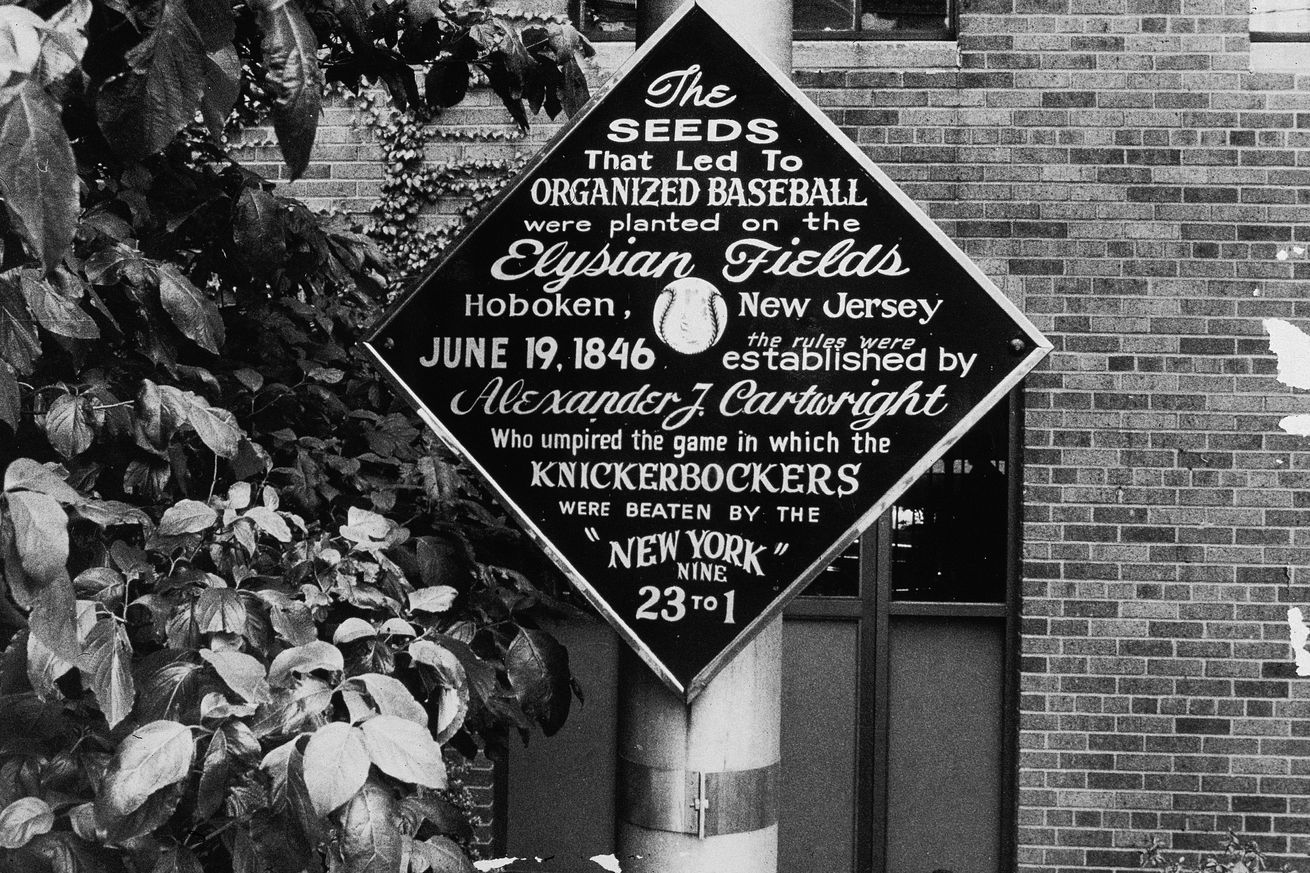
My visit to Cartwright Field.
In September 1845, Alexander Cartwright wrote rules that differentiated baseball from cricket. Highlights were diamond-shaped infield, foul lines, three-strike rule, and he eliminated tagging runners out by hitting them with thrown baseballs. His codified rules evolved over time.
Although there is some debate, the first game played by his rules occurred either 1845 or 1846. A game on 19 June 1846 was well documented. In that game the New York Knickerbocker Baseball Club (Alexander Cartwright was a member) lost to the New York Nine by 23-1.
Alexander Cartwright moved to Hawaii. He was the fire chief of Honolulu from 1850 to 1863 (while Hawaii was a Monarchy).
In 1852, based on his rules, Alexander Cartwright helped his son lay out a baseball field on a parcel of land in Makiki, Hawaii. That field is located at 1401 Lunalilo St, Honolulu, HI 96814.
That same year, he began teaching baseball to people in Hawaii per Lance Tominaga’s book Catch The Dream.
On 17 April, 2025, the City and County of Honolulu recognized the field he layed out as the oldest active baseball field in the United States. Baseball has deep roots in Hawaii! This may surprise some people who had though Fuller Field was the oldest (it’s not).
“I think it’s a wonderful surprise and a little bit of sports trvia all thrown in there. I think people are going to go, ‘Wow! That’s really cool! Who would have thought that?’” — Rick Blangiardi, Mayor of Honolulu
The city of Honolulu grew around the field. Currently, the field is bounded by streets on three sides and a bridge over the freeway on the fourth side. Interestingly, beyond left field and center field are a basketball court, swings, and a childen’s jungle gym.
Wanting to connect with the roots of baseball, I visited that baseball field. Three sides have on-street parking meters. Parking at $1.50 per hour is a bargain in Honolulu. After parking, I walked on the field and explored. My photos follow.
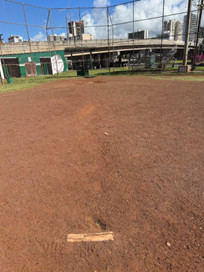
View from the pitching rubber, including the bleachers. Photo by Makakilo.
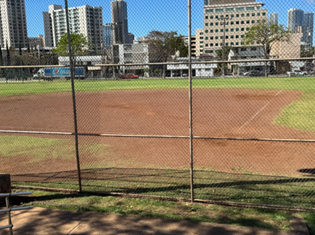
View from the top of the bleachers, looking towards right field. Photo by Makakilo.
The next photo is a view from right field, which was the position I played in little league. It captures how huge the field seemed to me.
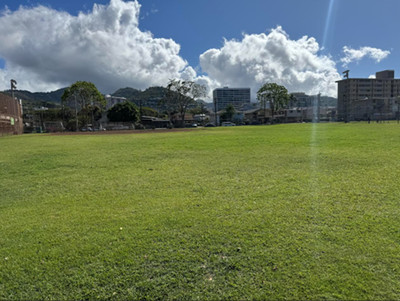
Photo by Makakilo.
The next photo is a plaque commemorating Alexander Cartwright, Jr.. It was just beyond the right field chain link fence.
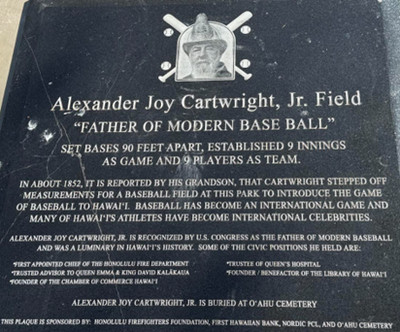
Photo by Makakilo.
One side of the field is bounded by a bridge over the freeway. On my way home I drove over that bridge, made a sharp left turn (seemingly into someone’s front yard), then kept turning until I reached 180 degrees, then soon turned right to merge into a one-way street with four lanes. Happily, the second lane from the right merged onto the freeway (the others would have kept me in Honolulu).
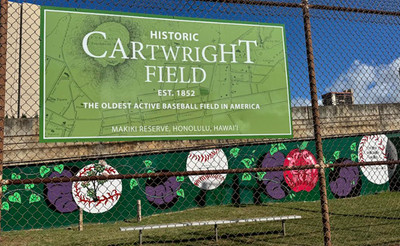
The side of the bridge was painted with a mural. Photo by Makakilo.
Fans can get hungry and thirsty cheering for their team! Just across the street were two places selling food and a convenience market.

Photo by Makakilo.
I talked with people in TK Mart. They had seen a softball game played on the field, but did not remember which day of the week. I thanked them for the information. I asked if they had souvenirs for sale. I was disappointed that they did not. Instead, I had happy memories and photos.
As a walked to my car, I felt energized. I found Cartwright Field and I connected with the history of baseball. Today was an awesome day.